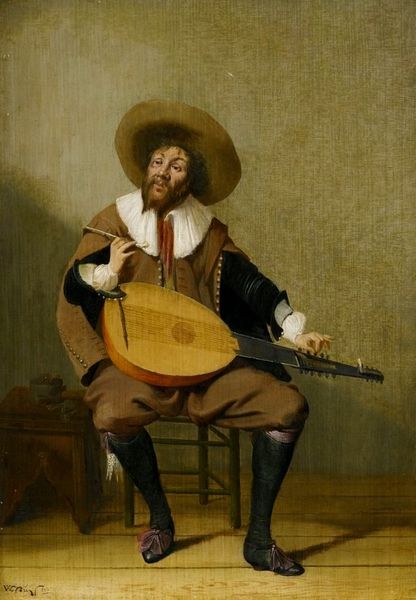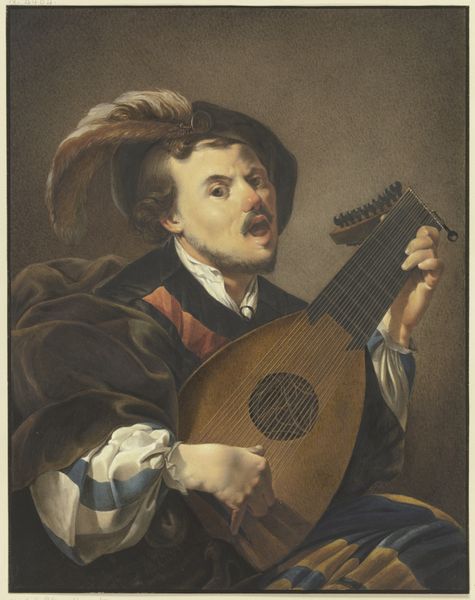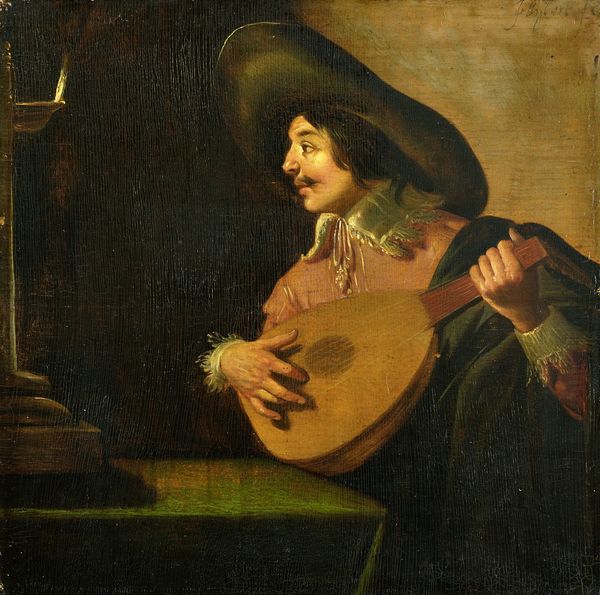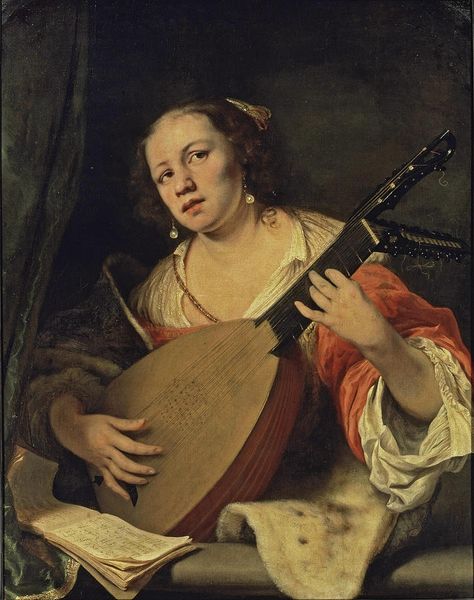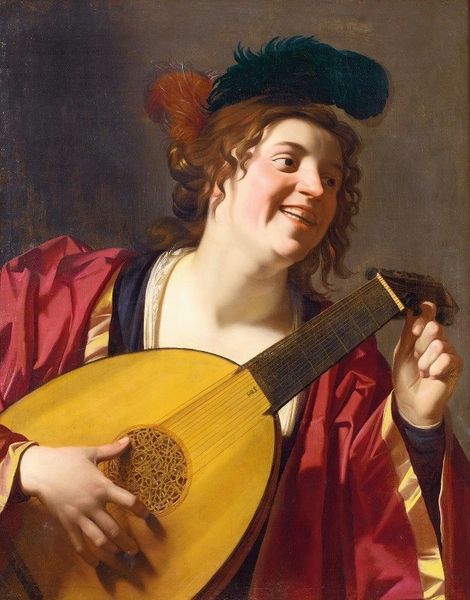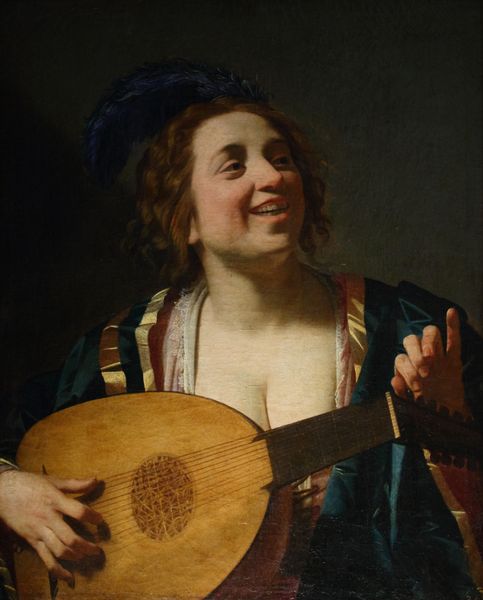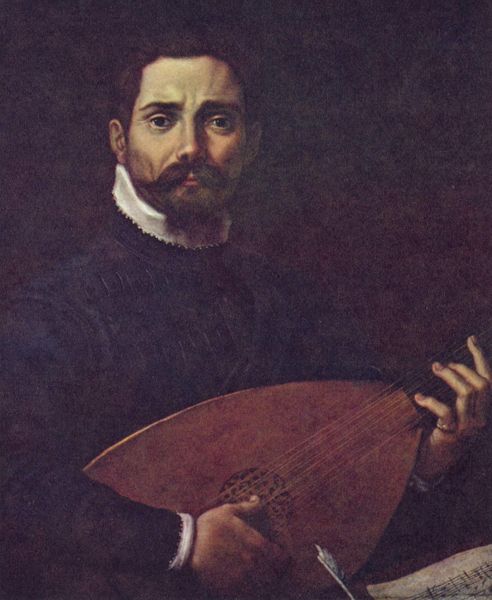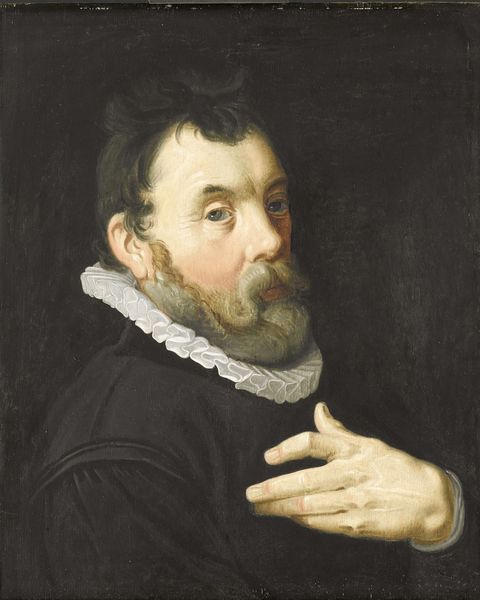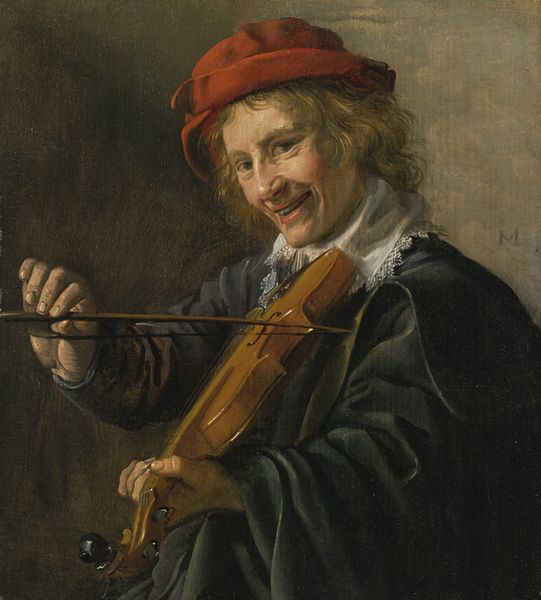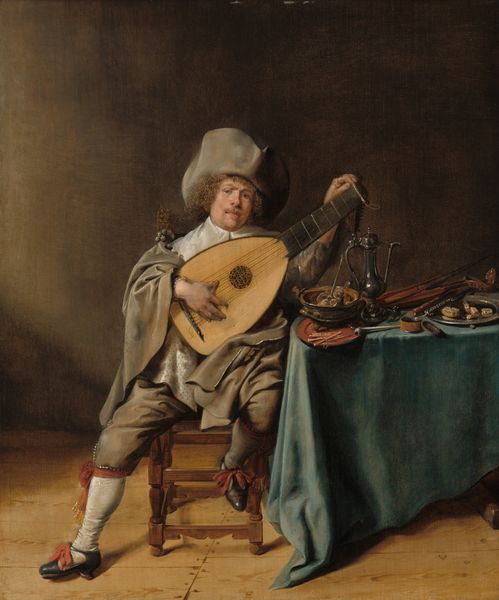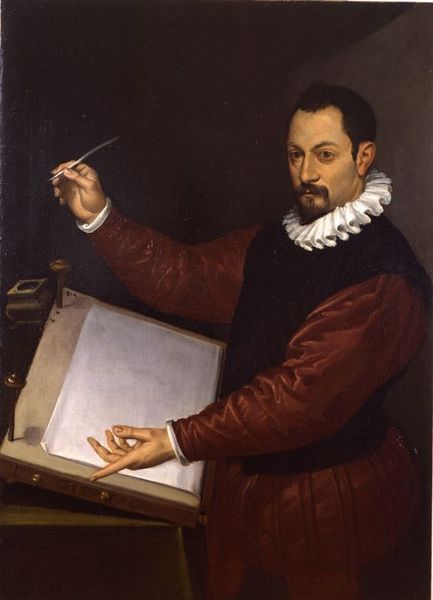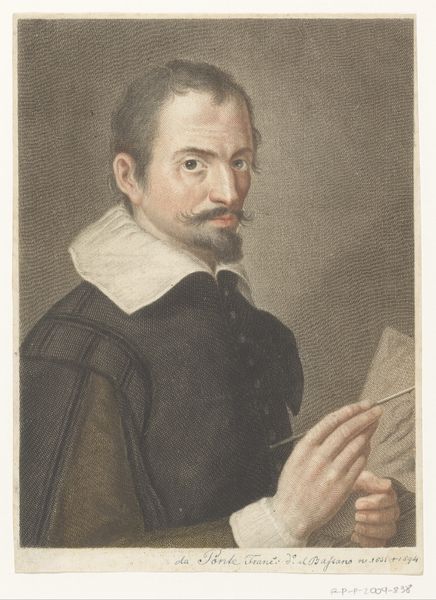
Dimensions: 77 x 60 cm
Copyright: Public domain
Bartolomeo Passerotti painted this portrait of a man playing a lute in 1576, likely with oil on canvas. Consider the material reality of this painting. The canvas, woven from fibers, provides a structured support for the image, while the oil paint, with its rich pigments, creates depth and texture. Passerotti skillfully manipulates these materials to create a lifelike depiction of his subject. The very act of painting—layering colors, blending tones, and adding details—infuses the work with cultural significance. The labor-intensive process speaks to the value placed on artistic skill and representation during the Renaissance. The lute itself is a product of skilled craftsmanship, reflecting a tradition of instrument making with social and cultural import, and an aesthetic linked with courtly life. Ultimately, appreciating "Portrait of a Man Playing a Lute" involves recognizing the interplay between materials, making, and cultural context, allowing us to move beyond traditional distinctions between art and craft.
Comments
No comments
Be the first to comment and join the conversation on the ultimate creative platform.

